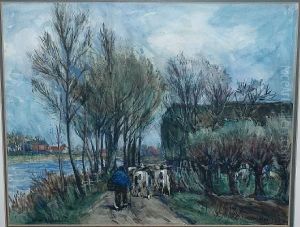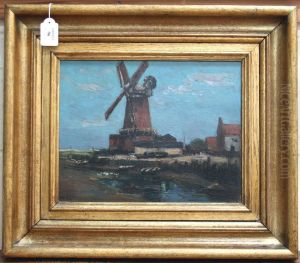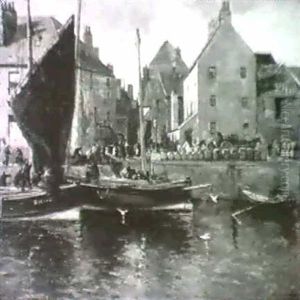William Henry Charlton Paintings
William Henry Charlton was an English artist and illustrator born in 1779. Not to be confused with other individuals of a similar name from different periods and professions, Charlton lived during a time when the art world was experiencing significant changes with the advent of Romanticism and the growing interest in landscape and genre painting.
Details about Charlton's early life and training are not extensively documented, but it is known that he was active during the late 18th and early 19th centuries. He worked primarily as an illustrator, contributing to the visual culture of the era. Illustrators like Charlton were crucial in disseminating images to a broader public, especially before the widespread availability of photographic reproductions.
During his career, Charlton would have been witness to the growing public interest in art, the establishment of major art institutions, and the increasing availability of art exhibitions. The Royal Academy of Arts, for instance, had been founded in London in 1768 and would have been an influential presence throughout his career. Charlton, however, does not appear to have been closely associated with the Academy or other leading art institutions of the time.
His illustrations often included scenes from everyday life, landscapes, and interpretations of literary works. These were likely published in books, periodicals, and as standalone prints. The 19th century saw a surge in the publication of illustrated books and magazines, which provided artists like Charlton with new opportunities for employment and artistic expression.
William Henry Charlton's death in 1866 marked the end of a long life that spanned a dynamic period in British art. While he may not have achieved the renown of some of his contemporaries, his work contributed to the rich tapestry of visual culture during the Georgian and Victorian eras. The lack of extensive records on his life and work is indicative of the many artists of the period whose contributions remain under-recognized in the broader narrative of art history.


